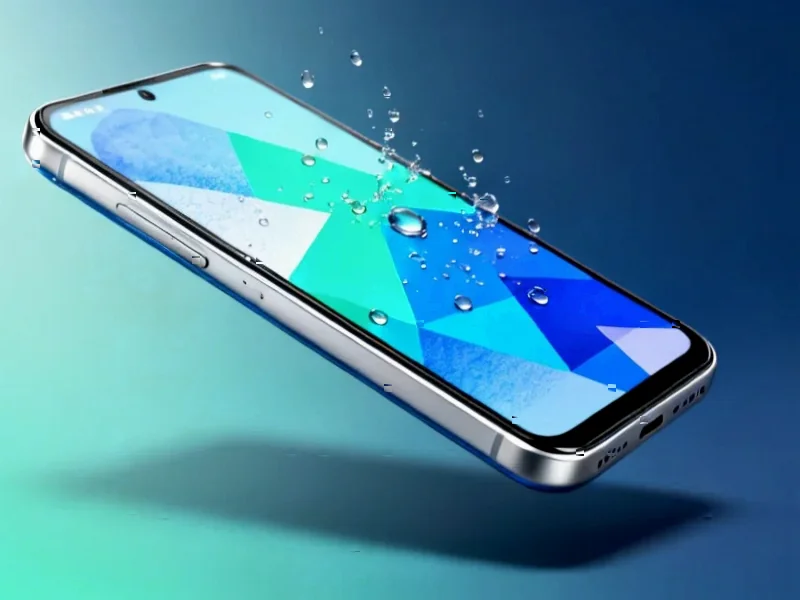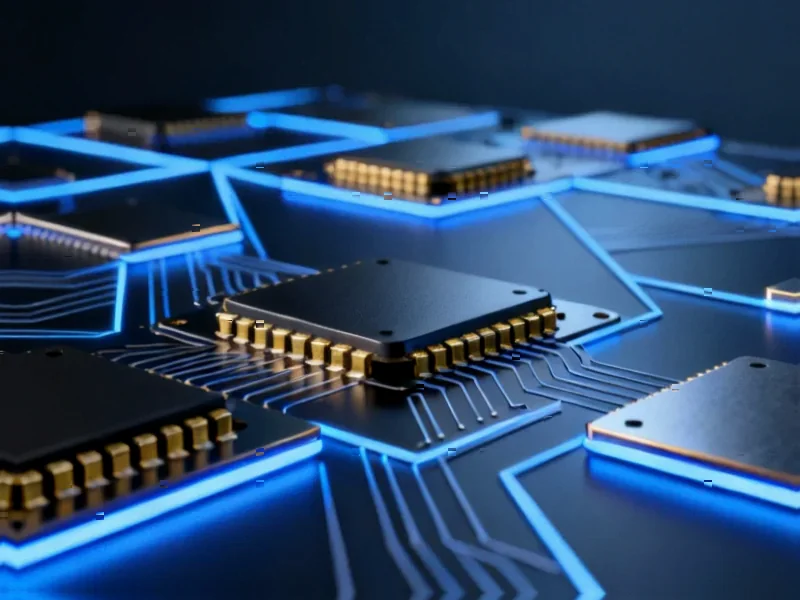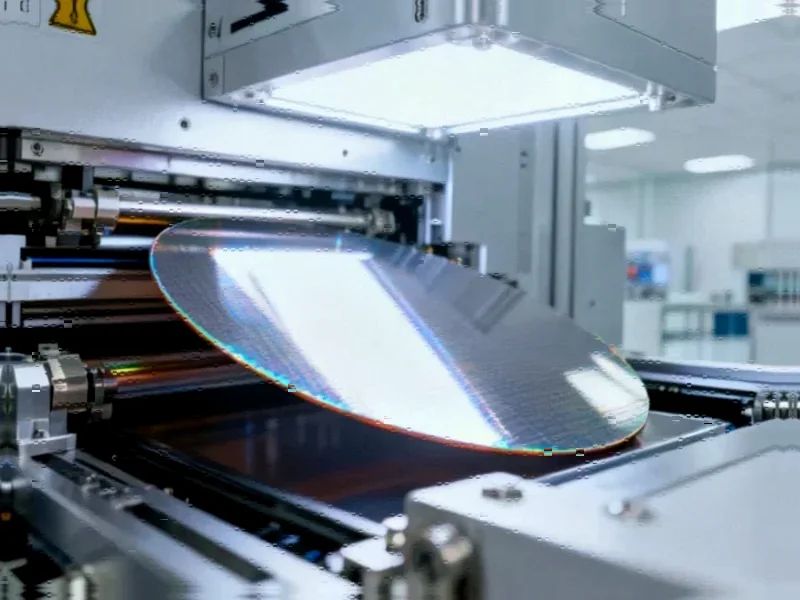The Enterprise Giant Meets the Maker Movement
In a move that signals a fundamental shift in semiconductor strategy, Qualcomm’s acquisition of Arduino represents more than just another corporate purchase—it’s a recognition that the future of IoT and robotics markets will be shaped not in corporate boardrooms, but in university labs, startup garages, and maker spaces. While Qualcomm built its $35 billion empire selling chips by the hundreds of millions to smartphone giants, it’s now embracing a platform where users often purchase single development boards for personal projects.
Table of Contents
- The Enterprise Giant Meets the Maker Movement
- The Silicon Vendor’s Paradox
- Arduino’s Developer Scale as Strategic Asset
- Timing the IoT Revenue Transition
- Solving the Chicken-and-Egg Problem
- The Arduino UNO Q: Bridging Prototype to Production
- Execution Challenges Ahead
- Maintaining Platform Neutrality
- Strategic Implications for IoT Leadership
The Silicon Vendor’s Paradox
Qualcomm faces what industry analysts call “the silicon vendor’s paradox”: production contracts are decided years before manufacturing begins, during the prototyping phase when engineers select development platforms and establish technical preferences. This critical decision window occurs long before Qualcomm’s enterprise sales team typically engages with customers.
As Nakul Duggal, Qualcomm’s Group General Manager for Automotive, Industrial and Embedded IoT, directly acknowledged to analysts: “To date, it’s been difficult for smaller developers to get access to Qualcomm chips because they typically get sold in large quantities to established enterprises.”
This access barrier has excluded Qualcomm from the experimentation phase where robotics companies, industrial IoT developers, and edge AI startups establish the technical foundations that later become production requirements.
Arduino’s Developer Scale as Strategic Asset
Arduino solves Qualcomm’s access problem through brute developer scale. The platform recorded nearly 40 million IDE downloads over the past year alone. These developers are learning hardware development, building robotics prototypes, and proving IoT concepts with low-cost Arduino boards. When their projects mature toward production, the technical architecture, processor preferences, and development expertise they established during prototyping heavily influence production silicon selection.
Qualcomm has been largely absent from these formative decisions, ceding developer mindshare to competitors while its enterprise sales team focused on automotive OEMs and industrial equipment manufacturers., according to according to reports
Timing the IoT Revenue Transition
The acquisition timing is strategic as Qualcomm aggressively ramps its IoT revenue growth. The company’s IoT and automotive businesses combined account for 30% of chip sales revenue in the past quarter, up from negligible contributions a decade ago but still secondary to mobile. However, IoT markets—particularly robotics and edge AI—feature fragmented ecosystems of startups and small manufacturers where traditional enterprise sales approaches fail.
Arduino provides immediate access to this ecosystem without requiring Qualcomm to rebuild its go-to-market infrastructure from scratch. This comes as Qualcomm launched its Dragonwing brand earlier this year to distinguish IoT and edge products from Snapdragon mobile processors., as comprehensive coverage
Solving the Chicken-and-Egg Problem
New chip brands like Dragonwing face a fundamental challenge: developers won’t invest time learning unfamiliar architectures without established ecosystems, and ecosystems don’t form without developer adoption. The Arduino acquisition short-circuits this process by giving 33 million developers immediate access to Dragonwing while positioning it as an accessible brand from day one.
This move completes a three-company strategy that began with Qualcomm’s recent acquisitions of Edge Impulse and Foundries.io. Together, these acquisitions address the full IoT development lifecycle from AI model development to hardware prototyping and device management.
The Arduino UNO Q: Bridging Prototype to Production
As part of the acquisition announcement, Arduino introduced its new Arduino UNO Q board featuring Qualcomm’s Dragonwing QRB2210 processor alongside an STM32U5 microcontroller in a dual-processor architecture. Priced at $44-59, this makes the QRB2210 the most accessible Qualcomm chip available, eliminating minimum order quantities and enterprise sales requirements that have historically blocked individual developers and startups from prototyping with Qualcomm silicon.
Execution Challenges Ahead
One of Qualcomm’s biggest challenges remains converting Arduino users to commercial customers. This requires either building new sales capabilities appropriate for small manufacturers or partnering with distributors and design services that bridge this gap. The acquisition provides developer access but doesn’t automatically solve the go-to-market challenge for serving these developers when they’re ready to purchase production silicon.
Qualcomm’s automotive success—which delivered $984 million in revenue during the latest fiscal quarter—doesn’t provide a relevant model for serving IoT startups developing robotics or edge AI products, who face unique constraints including limited capital, urgent time-to-market pressures, and the need for flexible volume commitments.
Maintaining Platform Neutrality
Perhaps the most delicate balancing act involves Arduino’s multi-vendor support. Arduino will continue supporting boards with chips from STMicroelectronics, Renesas, Microchip, and NXP, maintaining the platform neutrality that built its community trust. Qualcomm acquired Arduino specifically to promote Dragonwing silicon, creating inherent conflicts around resource allocation, product development priorities, and marketing focus.
Community members and competing silicon vendors will scrutinize these decisions for bias. Any perception that Qualcomm prioritizes its own chips over ecosystem neutrality risks fragmenting the very community that makes Arduino valuable.
Strategic Implications for IoT Leadership
The Arduino acquisition ultimately reflects Qualcomm’s urgency to diversify revenue beyond mobile. While IoT markets offer higher unit volumes across more diverse applications than automotive, success requires fundamentally different market engagement than Qualcomm has historically employed.
Qualcomm now faces the burden of proving it can operate two parallel business models: traditional enterprise sales for automotive and established IoT manufacturers, and community-oriented developer engagement for Arduino and emerging robotics companies.
Despite execution challenges and extended timelines, Qualcomm has assembled the right assets for IoT market leadership at a moment when robotics and edge AI markets are transitioning from experimentation to commercialization. The Dragonwing brand now enters the market with 33 million developers already familiar with its development platform, immediate presence in educational institutions, and a credible prototype-to-production story spanning AI development, hardware prototyping, and device management.
While the Arduino acquisition won’t solve Qualcomm’s near-term diversification challenges, it positions the company to capture leadership in robotics and edge AI markets as they scale from startups and research labs into mainstream industrial adoption over the next decade—a bet reminiscent of the foundational decisions that originally built Qualcomm into a semiconductor giant.
Related Articles You May Find Interesting
- Lam Research Stock’s Meteoric Rise: Unpacking the AI Chip Boom’s Impact
- CFO Evolution: Finance Chiefs Shift from Number Crunchers to Strategic AI Leader
- Engineering Trust: The Shift From AI Intelligence to Reliability
- Beyond the Music: How AI Deepfakes Threaten Artist-Fan Trust and Physical Safety
- Microsoft Teams Introduces Automated Workplace Location Tracking, Raising Privac
References & Further Reading
This article draws from multiple authoritative sources. For more information, please consult:
- https://www.qualcomm.com/news/releases/2025/10/qualcomm-to-acquire-arduino-accelerating-developers–access-to-i
- https://www.arduino.cc/
- https://www.arduino.cc/product-uno-q
- https://www.qualcomm.com/news/releases/2025/07/qualcomm-announces-third-quarter-fiscal-2025-results
This article aggregates information from publicly available sources. All trademarks and copyrights belong to their respective owners.
Note: Featured image is for illustrative purposes only and does not represent any specific product, service, or entity mentioned in this article.



